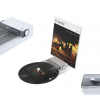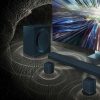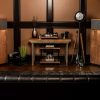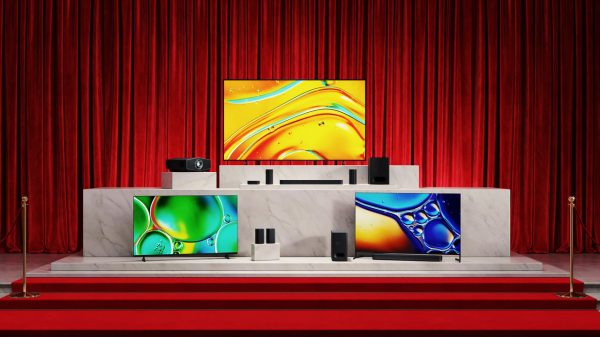With so many consumers opting for a soundbar in 2023, there are not as many new AV preamplifier/processors being introduced by the key players in the category.
Most commonly, a home theater receiver (AVR) is used at the central core of a home theater setup, but when you get into high-end territory, many opt to split AVR functions into two separate devices, an AV Preamp/Processor and Power Amplifier.

Tip: An AV preamp/processor may also be referred to as AV pre/pro, AV controller, AV control hub, or even just shortened to either an A/V Preamplifier or A/V Processor.
When these devices are separated, the sole purpose of the power amplifier(s) is to pass the incoming signal provided by the AV preamp/processor (which is done in analog form) and power the loudspeakers in the system.
Tip: You can use a separate power amplifier for each output channel of an AV preamp/processor, one or more multi-channel power amplifiers, or connect each preamp channel output to a compatible powered speaker. AV preamp/processors also include one (or more) connections for a powered subwoofer, which may be labeled as “LFE out” or “Sub out.”
Reminder: Since AV preamp/processors do not have built-in amplifiers they can’t connect to passive speakers directly.
AV Preamp/Processor Core Features
There are three main functions of an AV preamp/processor:
- Accept and switch between connected sources.
- Pass-through or process audio and video.
- Supply an audio output signal to a connected power amplifier and a video output signal to a connected TV or projector.

Source Switching
Consumers utilize a wide range of sources in their stereo or home theater systems and an AV preamp/processor is the simplest way to connect all of them in one place and switch between them.
Although the type and number of connection options may vary across brands and models, there is usually a combination of analog, digital audio, and HDMI connections provided. HDMI connections pass both audio and video signals, as well as support features such as ARC/eARC and HDMI-CEC.
Tip: Select high-end models may include either or both balanced or single-ended input/output options.

Pass-Through or Process Audio and Video
Source access and switching are just the starting point. After the desired source is accessed, the AV preamp/processor is designed to separate out the audio and video signals. This may include audio and video signal pass-through and/or processing.
For audio, in addition to traditional stereo, an AV preamp/processor may be called upon to provide audio decoding for one, or more Dolby (Dolby Digital, Dolby Atmos) and DTS (DTS digital surround, DTS: X)-based surround sound formats with some select preamp/processors also providing decoding for Auro 3D Audio.
Additional surround sound processing formats may also be provided. In addition, for digital audio-only sources, a high-end DAC(s) may also be included.
On the video side, AV preamp/processors provide video pass-through and some may also provide analog to HDMI conversion. Added support may include video upscaling, as well as HDR pass-through. Video enhancement and calibration settings might be provided on some models
Optional AV Preamp/Processor Features
In addition to the core features of an AV preamp/processor, additional options may be included at the manufacturer’s discretion.
Room Correction/Automatic Speaker Setup System
An AV preamp/processor might incorporate room correction software as a set-up feature; examples of systems include AccuEQ (Onkyo), Anthem Room Correction (Anthem AV), Audyssey (Denon/Marantz), Dirac (Select Denon/Marantz/ARCAM/Integra/Pioneer Elite/Onkyo), MCACC (Pioneer), and YPAO (Yamaha).
Although there are specific differences, these systems typically use test tones that the AV preamp/processor sends to speakers via the connected power amplifier(s), which are picked up by a microphone connected to the AV preamp/processor.
From there, the program calculates speaker size and distance from the listening position. The system then calculates the system crossover points, channel level settings, and other parameters to provide the best system performance within the specific room environment.
Tip: You also have the option of performing the above process manually.

Wired Multi-Zone Audio
This capability supports the ability of the AV preamp/processor to provide connection and control for two or more audio or audio/video systems in other rooms via the use of additional external amplifiers not needed for the main system.
Typically, the additional zones are limited to two-channel audio — However, depending on the brand/model of the preamp/processor, other combinations may be possible.
Wireless Multi-room Audio
This capability allows users to stream music from the AV preamp/processor to other compatible wireless systems in the home.
Multi-room audio platforms that are compatible with specific brands/models may include MusicCast (Yamaha), DTS Play-Fi (Anthem, Integra, Pioneer), SONOS (Onkyo), and HEOS (Denon/Marantz).
Tip: Select AV preamp/processors include support for Bluetooth and Apple AirPlay. Some models may also include Chromecast Built-in.
USB
USB connectivity may also be included. This allows access to music content stored on compatible devices, such as flash drives.
Voice Control
Compatibility with Alexa, Google Assistant, or Siri may be provided which may provide control of some preamp/processor settings, as well as voice command control of some music playback functions.
Tip: Since there is a lot of variation in regard to the capabilities and precise features of different AV preamp/processor brands and models, it is vitally important that users take the time and read through provided user guides and other related documentation before setup and use.

Audio/Video Output
Although the primary focus on an AV preamp/processor is to decode multi-channel audio for surround sound, video switching is an important convenience factor and buyers should be aware of the HDMI version supported. HDMI 2.1 or higher should support 4K or 8K TVs (4K@120Hz or 8K@60Hz).
Tip: All HDMI cables are not the same. Look for 48Gbps cable speeds or Ultra High Speed HDMI Certification on the packaging.
AVR vs. AV Preamp & Amp?
Since choosing to buy an AV preamplifier/processor requires the purchase of a multi-channel power amplifier, the combo is very likely to cost more than an A/V Receiver (AVR). In addition, more cables are needed to connect between preamp and amp, which also adds cost and installation complexity.
The benefit of an AV preamp/processor is that one is not limited to the amplifier section inside of an AVR; which may not offer the power or sound quality of a separate power amplifier.
Related Reading


















































